I started this mod a few weeks ago already, but I had to wait for a glass lens from KD to finish it.
In my series let's-try-out-some-leds-from-Mouser the most expensive one at $29 (that is without taxes :-( ) was this newest Ledengin 360-370nm UV-led (partnr. LZ1-30UV00-0000):
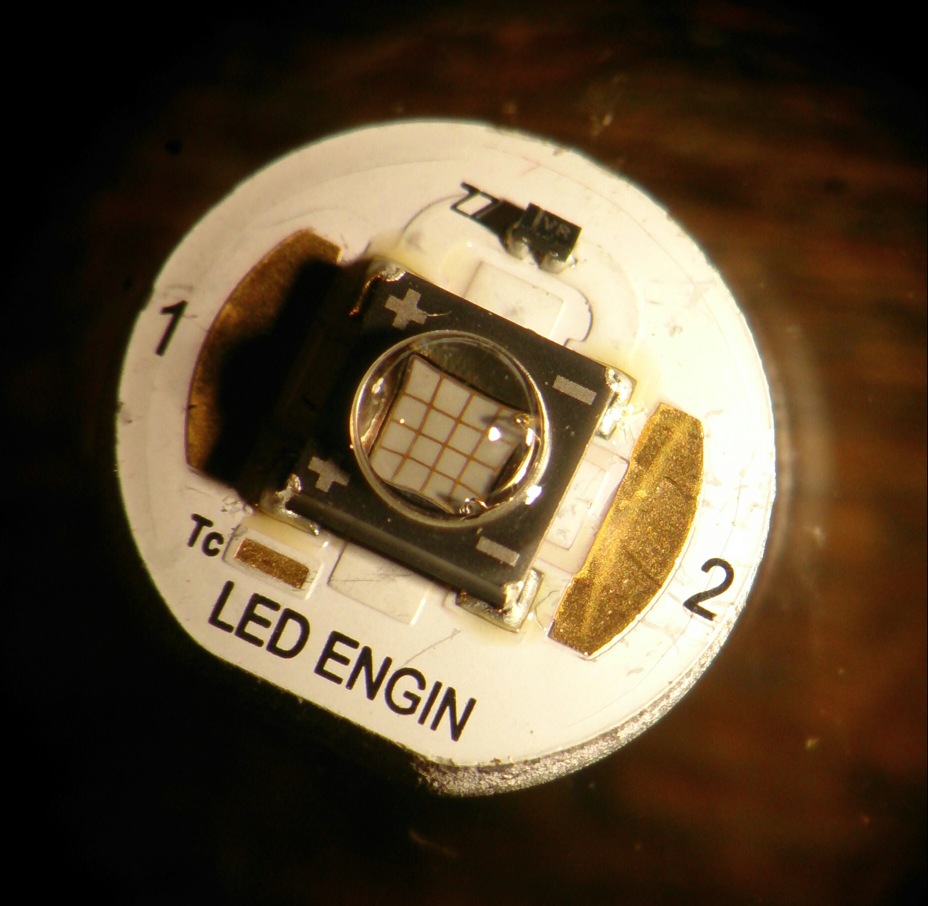
It is supposed to put out 1000 mW of radiated UV at only 4 W of power use, that is a very good output and as efficicient as I have not seen yet. The dome is made of glass (that should have been a warning..), and the emitting angle is 70 degrees, which makes this led ideal for a zoomie. I wanted to buy the bare led and fit it somehow on a XML-Sinkpad and do some overdriving it, but with the very different solder pad lay-out, despite some heavy measuring, I realised that it was not going to happen. So I bought it pre-mounted on a aluminium 'miniboard' and decided to stick to the official maximum current.
The driving voltage at 1A (which is the maximum current according to specs, and the current I want to drive it at) is reached at over 4V, so to drive it from a single 14500 size battery it needed a boost driver. I had a spare BLF-mini driver (=a Trustfire mini-01 driver with BLF customised mode spacing and PWM) that is made to boost a cr123 battery of 3V to the led voltage, I figured that it would boost a Li-ion to 4.2V as well. I wired the Ledengin up with the driver and checked the current, and succes, I got 1.03 A on high, just what I wanted:
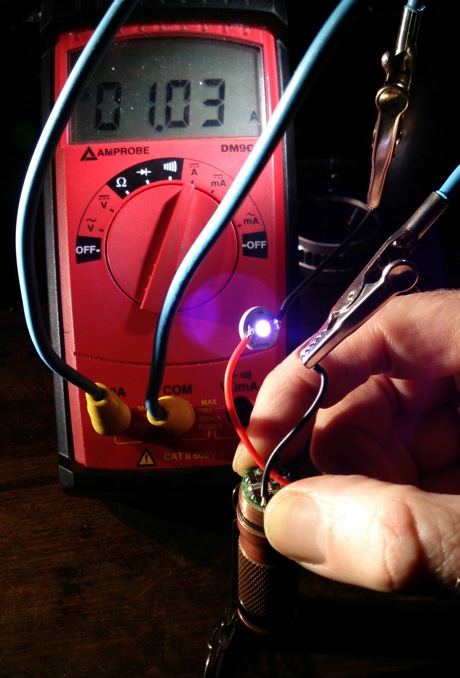
I wanted to fit it into this SmallSun ZY-A29 AA-zoomie that I modded before with a red XR-E, so this will be its third led:
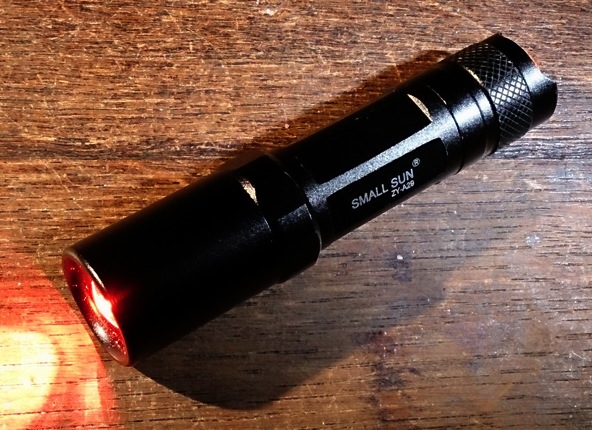
This host being so small, it has some challenges, the main one being the driver board size: only 14mm, while the BLF-mini driver was 17. I was able to file the driver down to 15mm and let it fload under the pill instead of inside it.
That miniboard appeared to be a rather unusual 11m diameter, so to fit it in the Small Sun that had a hollow pill for 16mm boards, I had to mount it on a piece of copper. The old dutch 1 cent coin is 17mm, and made of solid copper (well, being stiffer than pure copper, it must be an alloy with a few percent other metals I think, but heatsinking should be good enough):
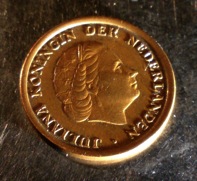
So I sanded the tail-side flat (to show a little respect to our late queen), made two cut-in's for the wires and glued the mini-board on it with ArcticAluminaAdhesive.
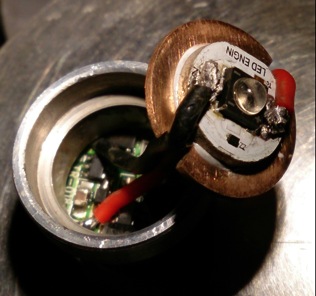
Next I glued the board with AAA into the pill:
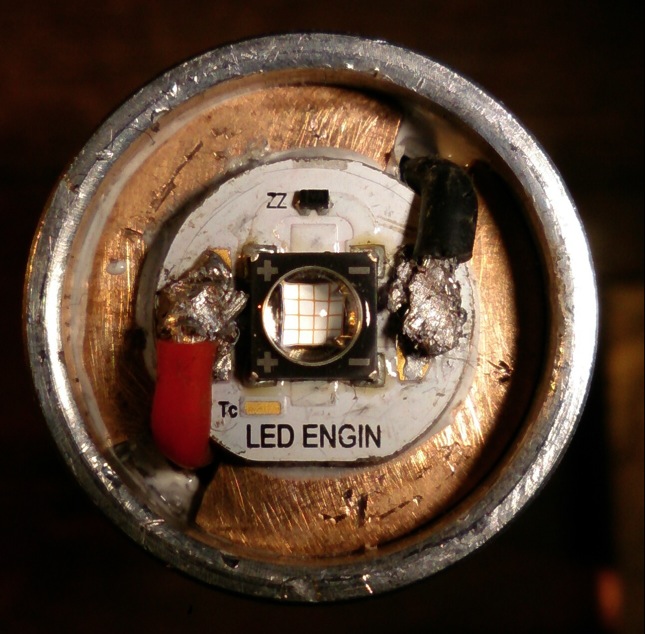
Now, the driver was not finished with me yet, its components being so close to the edge after reducing the diameter, they shorted to the pill all the time, I resoldered the led wires more to the middle and managed to rip off a solder pad, so I had to move up the minus-wire to somewhere else:

Still I got shorts, so something creative had to be done. I made a few big solder blobs on the minus ring on thebattery side of the driver to make contact with the body and wrapped the driver with Kapton tape to insulate the components from the pill. A last salute to our late queen:
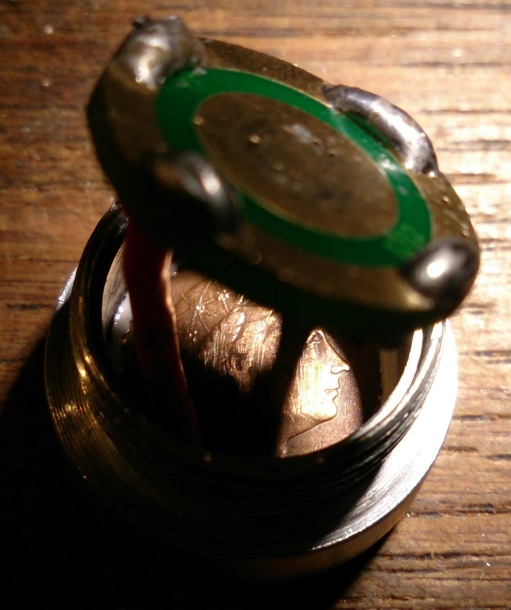
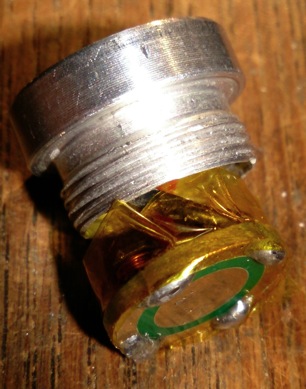
The solder blobs were not high enough to reach the body when the pill was screwed in so I put a piece of wire under in the pill cavity (a piece of a thin key-ring):
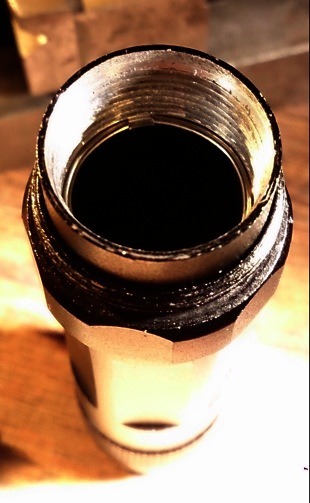
Now there was a closed circuit, the led lighted up and all modes worked. And the driver being boost, it also works with LiFePo batteries and even NiMh's (although with less output). As a mule, this light already showed potential, everything bleached (paper) around the light lit up bright blue :-)
But when the lens was screwed on the pill the output decimated, apparently the PMMA the lens is made of does not transmit the 365nm light very well. So a glass lens had to be found, and a 20mm one appeared to be scarse. Finally I found one for 2.5 dollars at Kaidomain, 19.5mm diameter, should fit well enough. So the waiting began.......
.............
.............and after three weeks the lens arrived ( three weeks is ok, could be better, could be worse), left the old plastic lens, right the new glass one:

It is clear that the glass lens has a shorter focal length, actually I like that, it sits closer to the led and catches more light. To actually get it closer to the led, on the front side of the lens an extra o-ring (GITD :-) ) was placed, and on the back side the retaining ring of the led was sanded thinner (no problem, it was huge) to allow the lens to get closer to the pill.
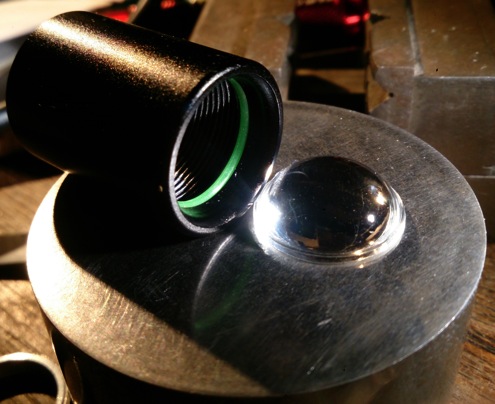

Everything fitted nice and tight now, and yes, and the glass lens worked very nicely with the led, both zoomed out and zoomed in, mod finished :-)
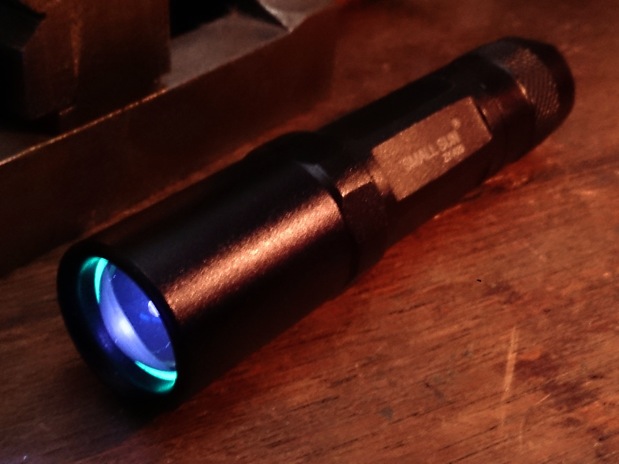

I have get-son-out-of-bed duty early tomorrow morning, so I finish with one action shot of my hobby-mess, light zoomed out. Later I will add a few more. Thanks for reading.
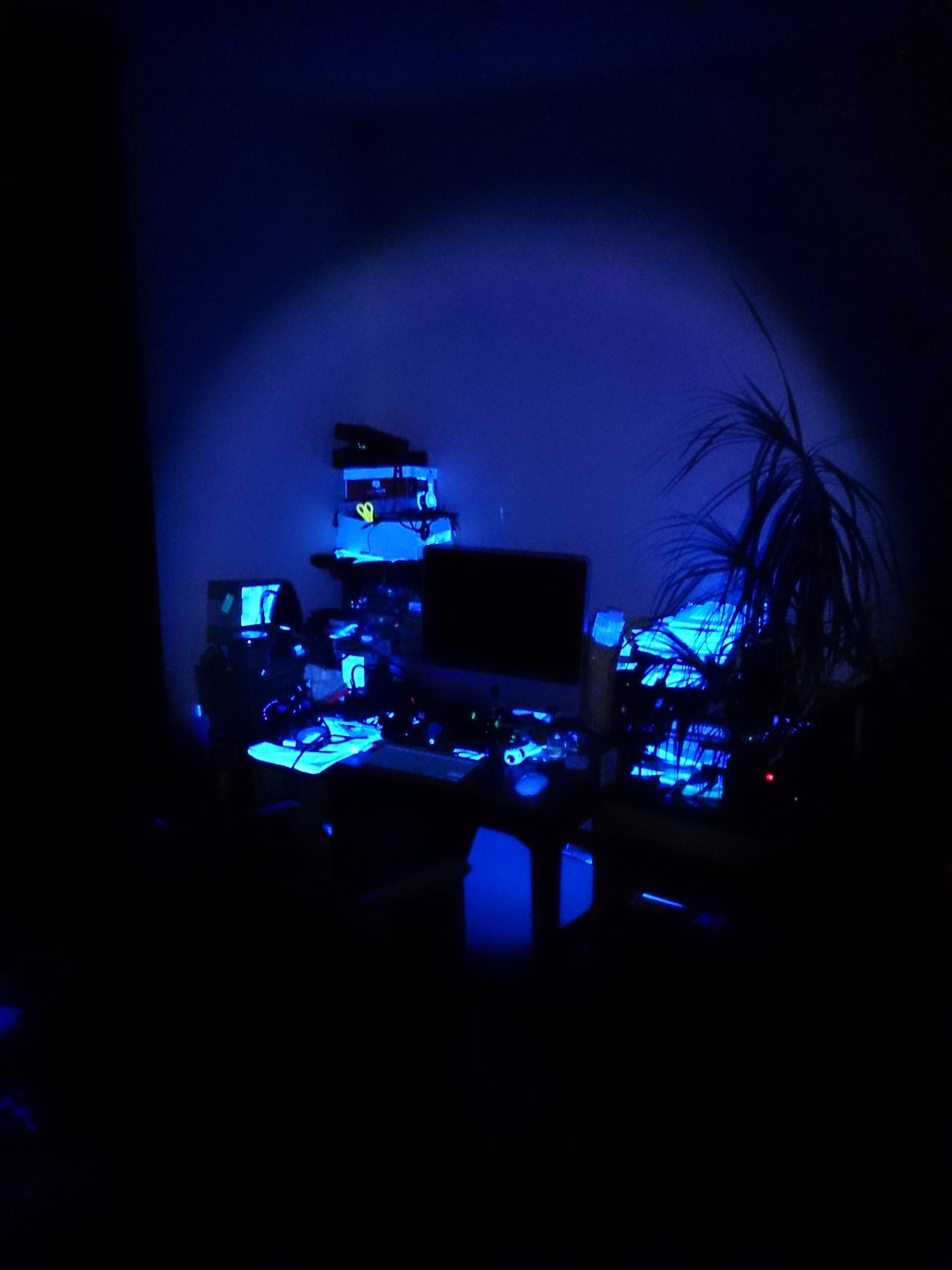
EDIT: more pictures post#11
 at low (2%) setting
at low (2%) setting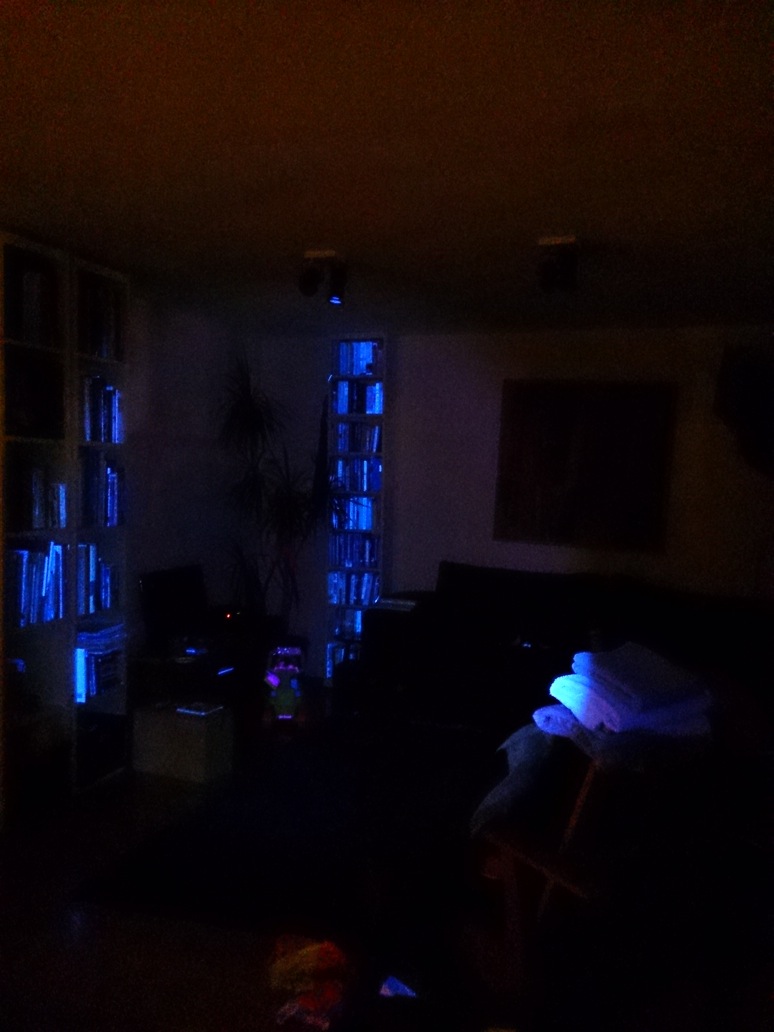 on high, mouse over for zoom-in
on high, mouse over for zoom-in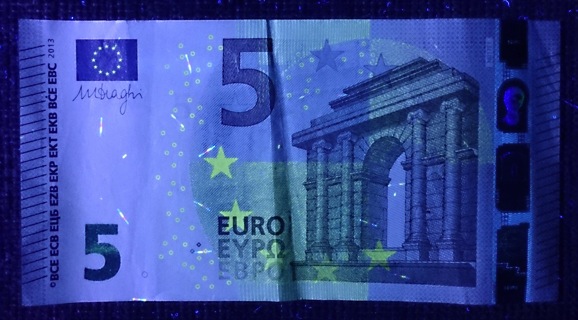 the new 5 euro bill, mouse-over for back side
the new 5 euro bill, mouse-over for back side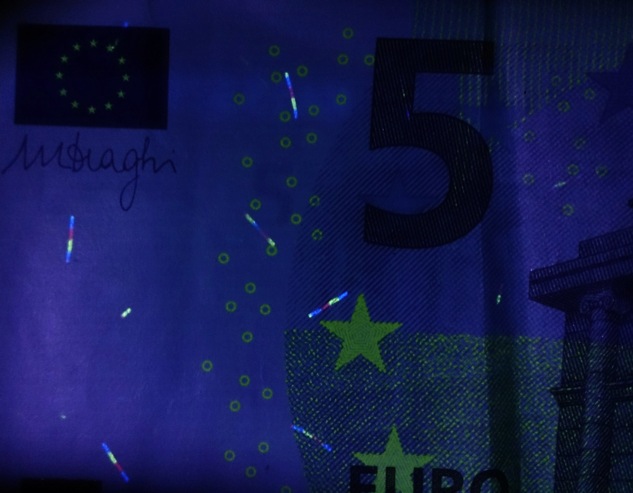 detail
detail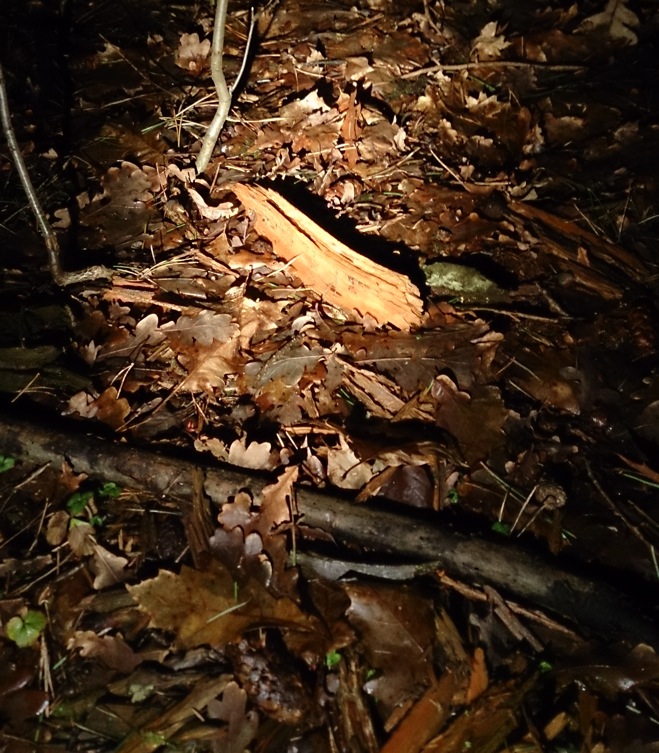 in the woods, mouse over for UV
in the woods, mouse over for UV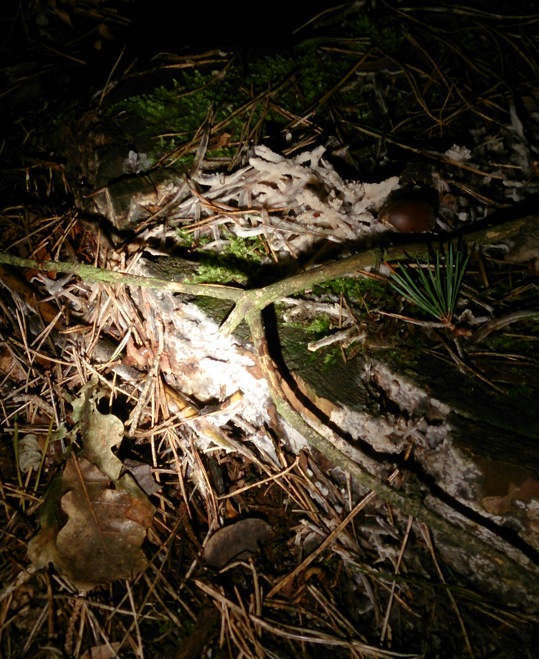 mouse over for UV
mouse over for UV .
. /
/ )
)